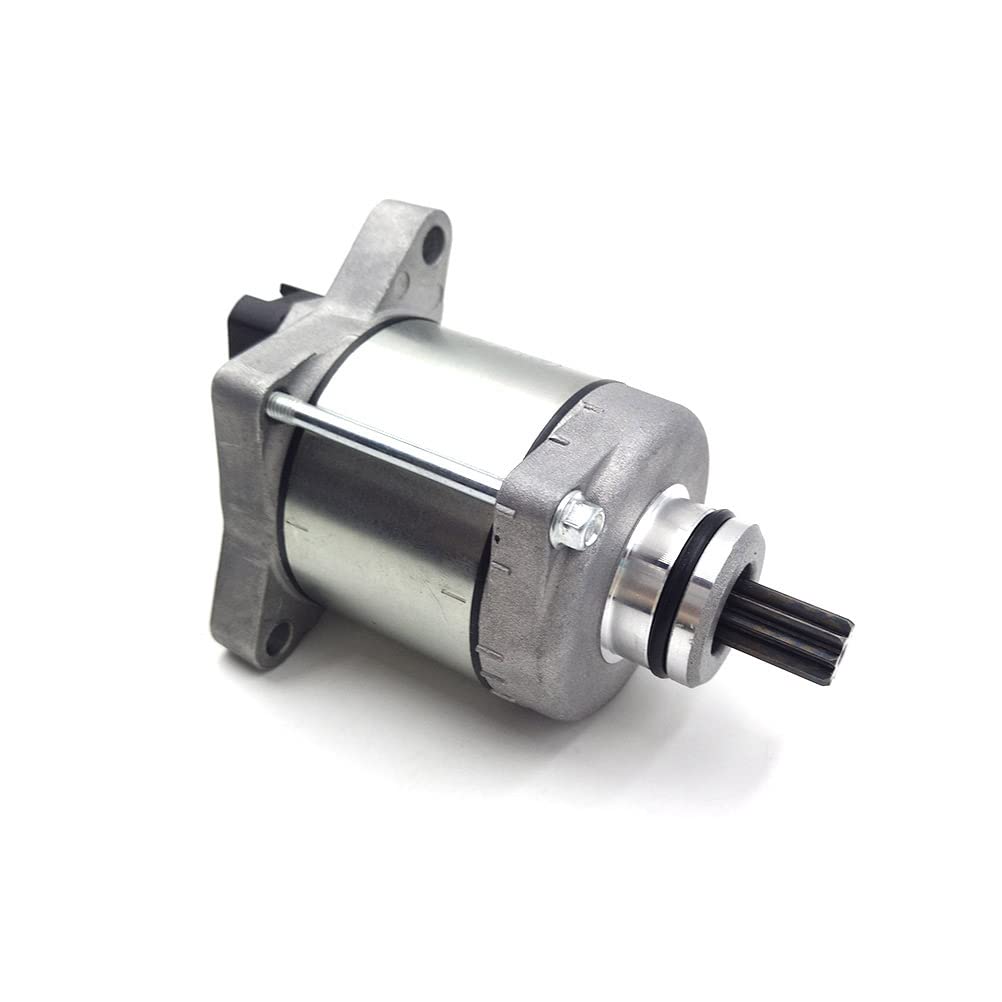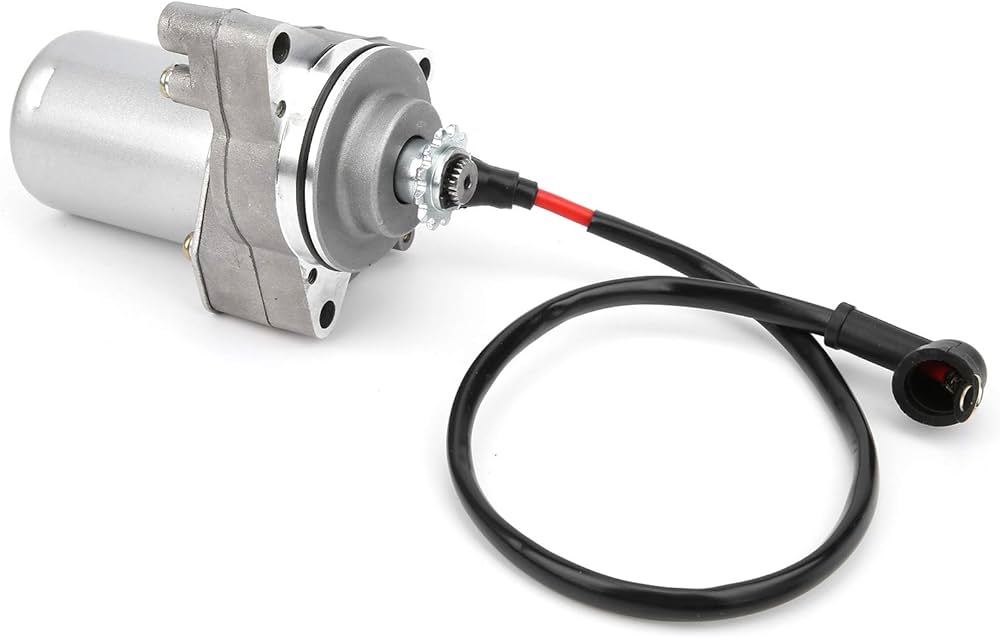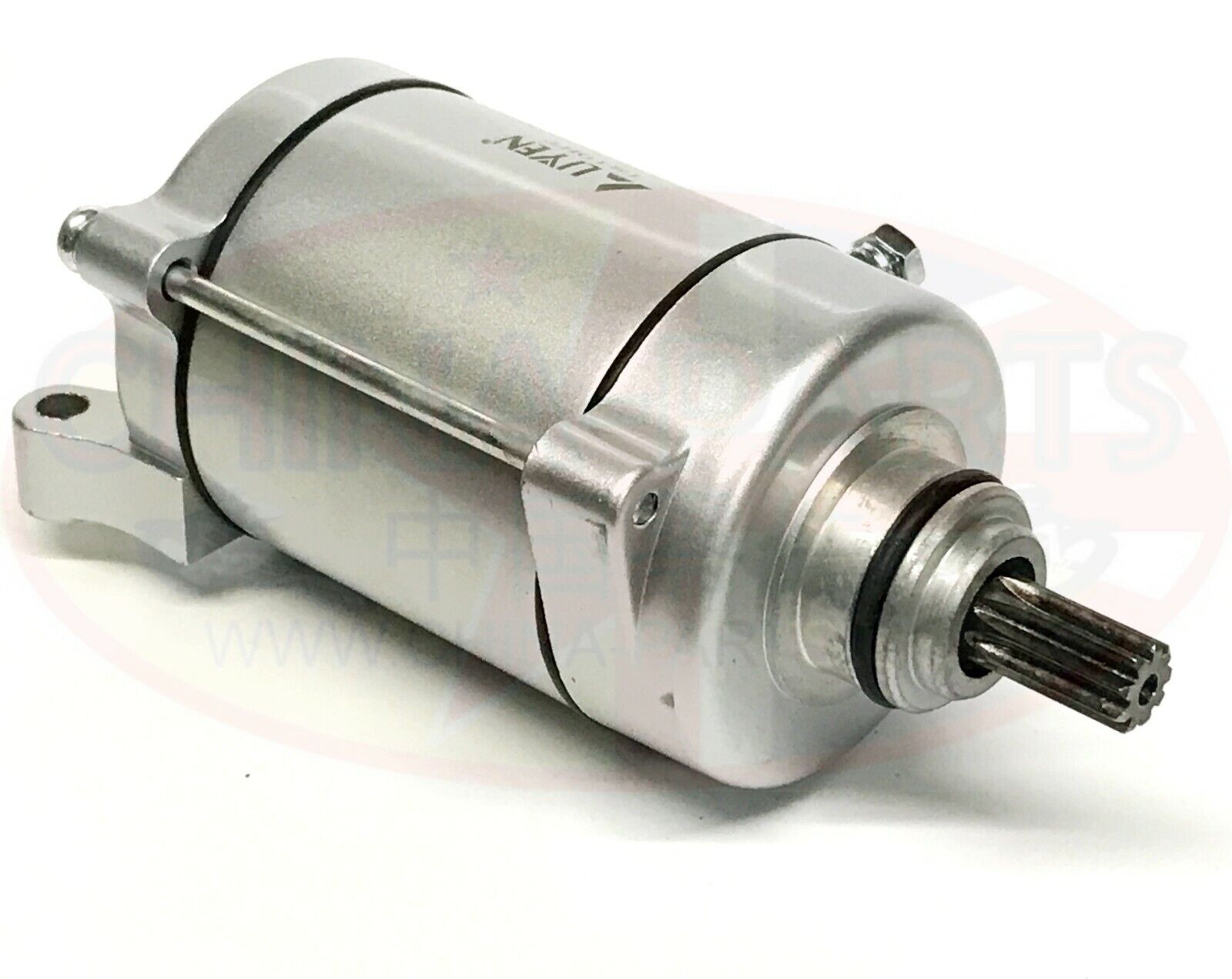In the realm of motorcycles, where power and precision intertwine, the starter stands as a crucial component, the unsung hero that breathes life into the machine. This intricate mechanism, often overlooked amidst the roar of the engine and the thrill of the ride, plays a pivotal role in initiating the symphony of combustion and setting the stage for every adventure. This comprehensive guide delves into the mechanics of a motorcycle starter, illuminating its anatomy, operation, troubleshooting techniques, preventive maintenance strategies, and the exciting future advancements that lie ahead.
Demystifying the Anatomy of a Motorcycle Starter
The motorcycle starter, nestled within the depths of the machine’s electrical system, is a marvel of engineering, meticulously crafted to harness electrical energy and transform it into the mechanical force required to crank the engine to life. Its intricate components work in harmony, each playing a vital role in the starting process.
At the heart of the starter lies the starter motor, a compact powerhouse that converts electrical energy into rotational force. This electric motor, typically powered by the motorcycle’s battery, consists of a stator, a stationary coil of wire, and a rotor, an electromagnet that rotates within the stator. When an electric current powers the starter motor, it generates a magnetic field that interacts between the stator and rotor, producing torque to crank the engine.
Engaging the starter motor and regulating the flow of electrical current is the responsibility of the starter solenoid. This electromechanical switch acts as an intermediary between the ignition switch and the starter motor. When the ignition key turns to the start position, it sends a signal to the starter solenoid, energizing its coil, and causing it to engage a plunger that mechanically connects the battery to the starter motor. This action provides the necessary power to crank the engine.
The Journey of Starting: Understanding the Starting Process
The act of starting a motorcycle, though seemingly effortless, involves a carefully orchestrated sequence of events, each component playing its part in bringing the engine to life. This intricate process begins with the activation of the ignition switch, a pivotal moment that sets the stage for the starting sequence.
As the ignition key is turned to the start position, it completes a circuit, sending a signal to the starter solenoid. This electrical signal energizes the solenoid’s coil, creating a magnetic force that pulls down a plunger. The plunger’s movement mechanically engages a switch, completing the circuit between the battery and the starter motor.
A surge of electrical current from the battery now flows through the starter motor, energizing its coils. The interaction between the stator’s magnetic field and the rotor’s electromagnets generates torque, causing the rotor to spin rapidly. The gear reduction mechanism transfers this rotational force to the engine’s crankshaft, cranking the engine and initiating the combustion process.
Troubleshooting Common Starter Problems
While motorcycle starters are designed to withstand the rigors of the road, they are not immune to occasional malfunctions. These issues can manifest in various ways, from annoying clicking sounds to complete failure to start, disrupting the riding experience and potentially leaving riders stranded.
A telltale sign of a starter problem is the presence of clicking sounds when the ignition key is turned to the start position. These clicks often indicate a faulty starter solenoid, which is unable to engage the starter motor due to a damaged coil or worn contacts.
Slow cranking, another common starter issue, can be caused by a weak battery, corroded connections, or a failing starter motor. A battery that has lost its charge or is nearing the end of its lifespan may not provide sufficient power to crank the engine effectively. Corroded connections between the battery, starter solenoid, and starter motor can impede the flow of electrical current, also leading to slow cranking. A failing starter motor, with worn bearings or damaged windings, may not generate enough torque to crank the engine at a normal speed.
Complete failure to start, the most severe starter issue, can arise from a variety of causes, including a dead battery, a blown starter fuse, a faulty ignition switch, or a damaged starter motor. A completely discharged battery will not provide any power to the starter system, preventing the starter solenoid from engaging and the starter motor from turning. A blown starter fuse, designed to protect the electrical system from overloads, will interrupt the current flow to the starter, preventing it from operating.

Preventive Maintenance: Ensuring a Reliable Starter
Regular preventive maintenance is the cornerstone of a reliable starter system, preventing problems before they arise and prolonging the life of this crucial component. By following simple maintenance practices, riders can minimize the risk of starter malfunctions and enjoy trouble-free starts.
One of the most important aspects of starter maintenance is keeping the battery in top condition. Regularly checking the battery
voltage and ensuring it remains within the manufacturer’s recommended range is essential. A healthy battery provides the necessary power for the starter to function effectively. Additionally, cleaning and tightening the connections between the battery, starter solenoid, and starter motor can prevent corrosion buildup that hinders electrical flow. These connections should be visually inspected for signs of wear or damage, and a wrench can be used to ensure they are secure but not overtightened.
Another preventative measure involves lubricating the starter motor’s moving parts, typically the starter shaft and gear reduction mechanism. Consult your motorcycle’s service manual for specific lubrication points and recommended lubricants. Proper lubrication minimizes friction and wear, ensuring smooth operation and extending the starter’s lifespan.
Following the manufacturer’s recommended maintenance schedule is crucial. This schedule may include specific instructions for inspecting the starter system, cleaning components, and replacing worn parts. By adhering to these guidelines, riders can proactively address potential issues before they escalate into major problems.
Upgrading the Starter: Enhancing Performance and Reliability
For riders seeking to improve their motorcycle’s starting performance or enhance reliability, upgrading the starter presents a compelling option. Upgraded starters offer several benefits, catering to various riding styles and needs.
High-torque starters, boasting increased power output, are ideal for motorcycles with large engines or those used in demanding off-road conditions. These starters can overcome the increased resistance of larger engines and ensure reliable starts even in cold weather when battery power may be lower.
Lightweight starters, appealing to riders seeking weight reduction, are constructed from high-strength materials and offer similar performance to stock starters while minimizing weight. This reduction in weight can contribute to improved handling and overall motorcycle performance.
Gear reduction starters, employing a gear reduction mechanism that increases the rotational speed of the starter motor, offer a unique advantage. By spinning the engine crankshaft faster, gear reduction starters can overcome minor engine issues or weak batteries, ensuring a quicker and more reliable start.
Selecting the appropriate starter upgrade requires careful consideration of several factors, including the motorcycle’s engine size, riding style, and budget. Consulting with a qualified motorcycle mechanic or a knowledgeable parts supplier can provide valuable guidance in choosing the best upgrade option for your specific needs.
Safety Precautions: Handling the Starter with Care
When working on the motorcycle starter, prioritizing safety is paramount. Electrical components can pose a risk of shock, and improper handling of mechanical parts can lead to injuries.
Before commencing any work on the starter system, it is crucial to disconnect the battery’s negative terminal. This simple step isolates the starter from the electrical system, preventing accidental activation and potential shocks.
Utilizing the appropriate tools is essential for safe and efficient work. Consult your motorcycle’s service manual for specific tool recommendations and proper techniques. Avoid using excessive force when working with electrical connections or starter components, as this can damage delicate parts.
If the task seems complex or requires specialized tools or knowledge, seeking assistance from a qualified motorcycle mechanic is highly recommended. They possess the necessary expertise and tools to diagnose starter problems accurately, perform repairs safely, and ensure the proper functioning of your motorcycle’s starting system.

Leave a Reply